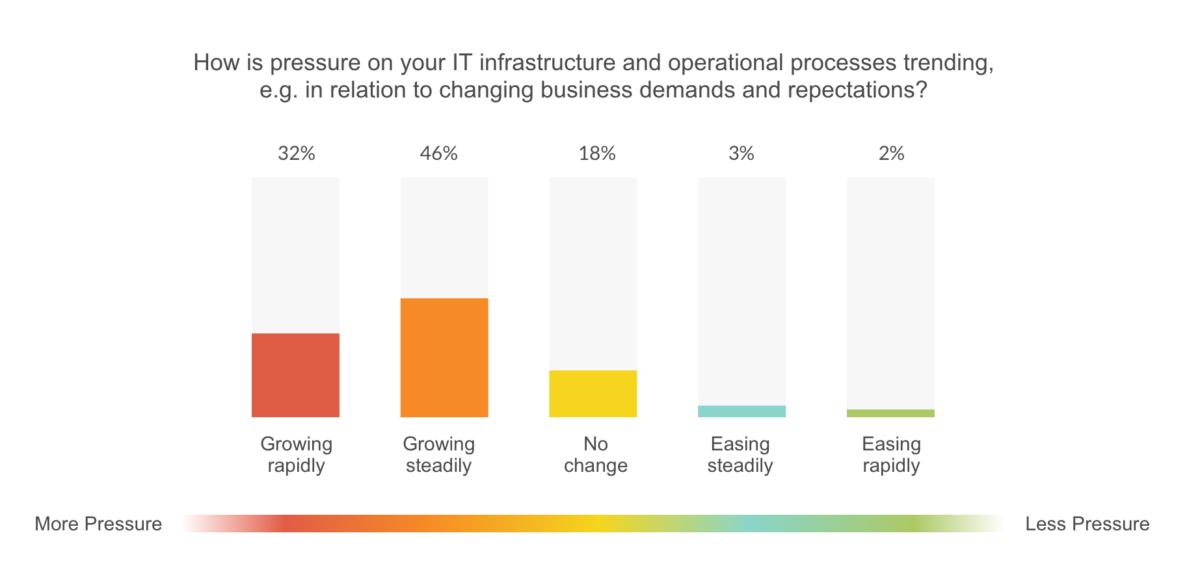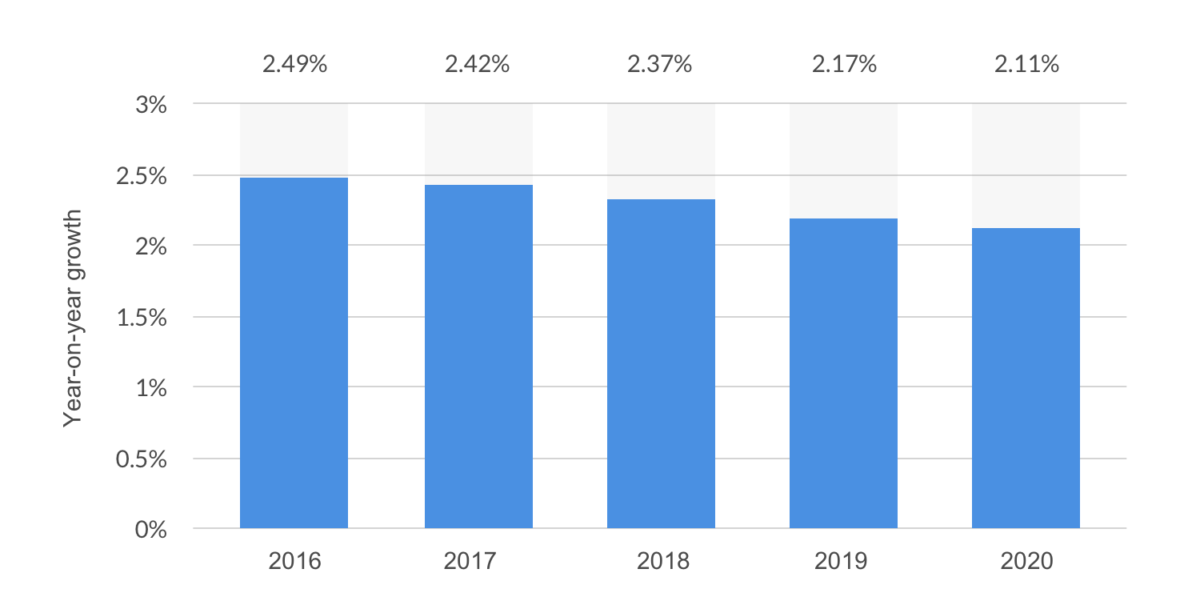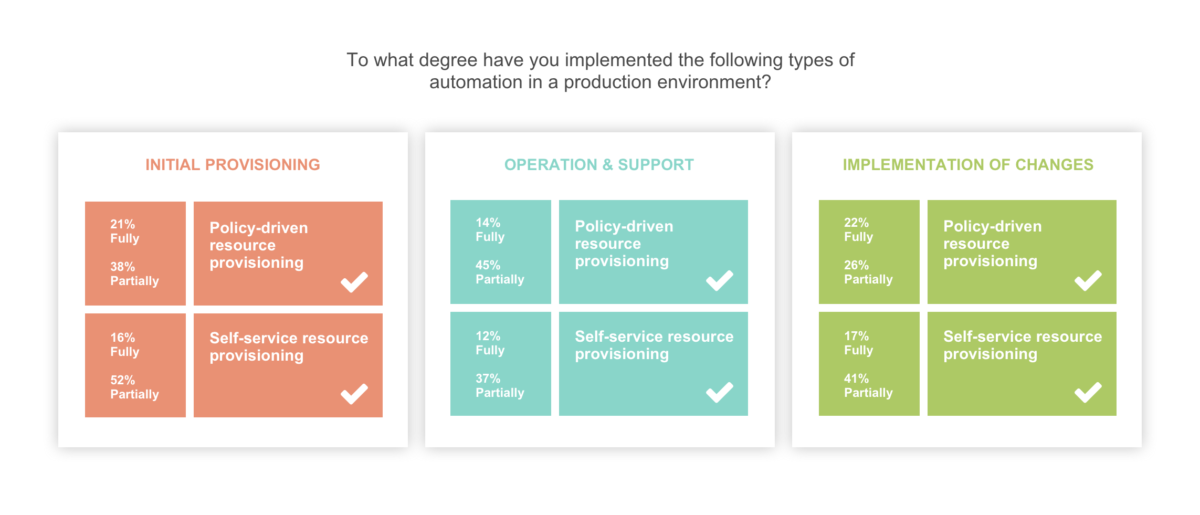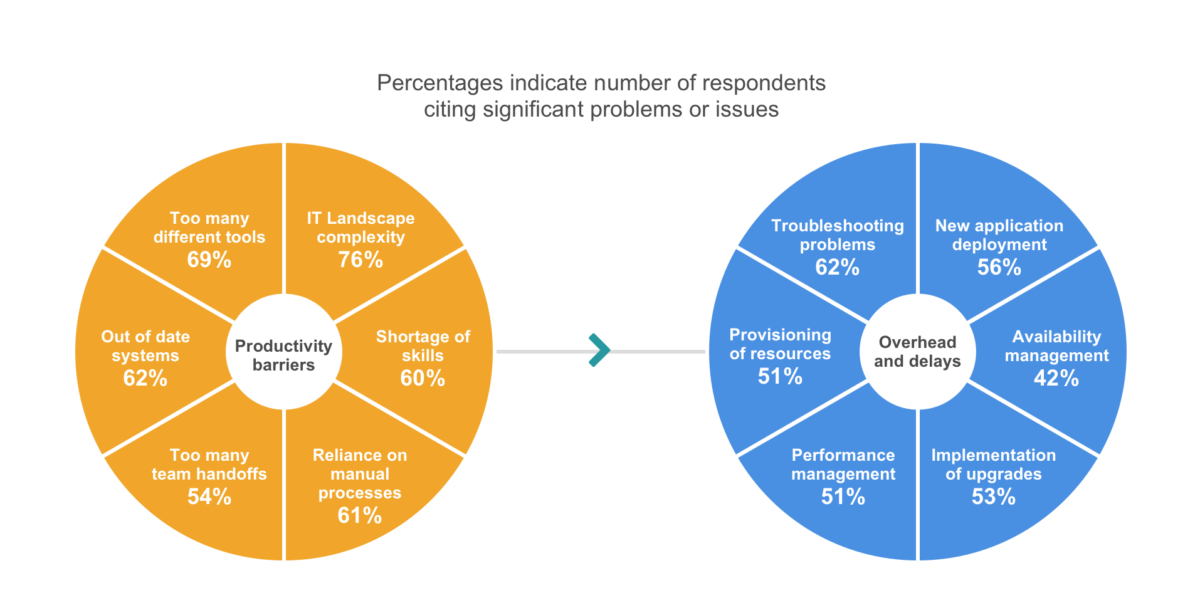It’s no surprise that automation has quickly become a crucial element of the future of work. From reducing manual effort to streamlining key processes, automation has benefits for every business, across every department.
With the explosion in the number of apps used throughout the enterprise, automations are required for fast and better decision-making, rapid product innovations, lower operational costs, and—above all—delightful customer experiences.
To build automations at scale, a larger part of the workforce must be empowered to create those automations. But traditional automation platforms require technical expertise that few employees possess. To create truly agile automations without relying on experts, lines-of-business staff like analysts and app admins need to be given new tools.
Similarly, the traditional approach to building automations is proving insufficient for ITOps as they try to keep pace with the growth of enterprise technology. How can you support reliability and agility in ITOps at a time of explosive growth in enterprise apps, IoT, and demanding business and customer expectations? With Gartner predicting that 50% of IT spending will go to shadow IT in the near future, ITOps can no longer afford to react at a glacial pace. Here are four reasons why ITOps will benefit from a new approach to automation just as much as line-of-business users.
Related: 5 ServiceNow integrations that your colleagues in IT need
1) Business demands on ITOps have grown. Staff and funding have not.
It’s no secret that ITOps is responsible for keeping important business tools up and running. But as companies adopt more technologically advanced tools (like best-of-breed SaaS apps), ITOps have more to manage. Keeping pace with basic service level requirements is already challenging enough. When ITOps must also support for new initiatives—such as IoT or digital customer engagement—it’s no surprise that over 75% of IT professionals say that pressure on their processes is increasing, according to a Freeform Dynamics study.
ITOps spending, however, has slowed year-over-year. In 2016, spending was expected to grow by almost 2.5%, according to Statista. The same study indicated that in 2018, ITOps spending would grow by only 2.37%. By 2020, the study predicts, ITOps spending will grow by only 2.1%.
Not only does IT spending grow at a slower rate than spending for other departments—digital marketing spend, in comparison, enjoys about an 11% compound annual growth rate—but that spending growth is also quickly shrinking. ITOps teams simply do not have the resources they need to meet the growing demands placed on them.
Pablo Stern, general manager and vice president of ITOM for ServiceNow, explains that this lack of spending growth directly impacts how ITOps functions. “The biggest issue is that IT organizations and budgets haven’t grown at the pace of the technology they are servicing,” he says. “The situation with IT isn’t pretty right now—more critical business services, more infrastructure, more silos, and increased complexity with less visibility […] The tools of yesterday require so much handholding and manual effort that IT is stuck being tactical. They want to be a strategic partner but are ill-equipped.”
Because of this lack of resources, it’s imperative for ITOps to solve inefficiencies within its own processes. Automation and integration would seem like the most obvious way to streamline ITOps, but it can take a lot of time and effort to create automations with traditional tools or custom code.
Most ITOps teams simply don’t have the resources to devote team members to building automated workflows with these methods. But another big problem is the lack of automation and integration specialists. There’s a discrete skill set required to be able to build automations through custom code, and the learning curve for traditional integration platforms can be steep. Even if ITOps can afford to automate, they frequently just don’t have the human capital required to do so. They need a better approach.
2) As enterprise technology has grown, IT faces the same problems as other departments.
It’s common to think of ITOps staff and lines-of-business staff as almost two different species. It’s easy to assume that ITOps will be the exception to many trends that affect other departments as they adopt new technology. After all, ITOps staff are more technically skilled than other employees. They should be well-equipped to address the changing ITOps landscape.
But data shows that ITOps do experience many of the same trends as other departments. For example, a Freeform Dynamics study demonstrates that when it comes to increasing productivity, ITOps faces the same barriers as teams like sales or customer support, such as:
- Too many disparate apps and databases. 69% of ITOps staff say they face difficulties using too many different tools.
- Workflows that involve manual or people-based steps.61% cited reliance on manual processes as a barrier to productivity.
- Not enough skilled staff. 60% of ITOps employees say their team faces a skills shortage.
- Landscape complexity. 76% said that the ITOps landscape is so complex, it hampers productivity.
These are the same problems that lines-of-business staff contend with. Just because they are more technically literate doesn’t mean that ITOps are well-equipped to overcome barriers to productivity that stem from the rapid adoption of new technology.
3) Opportunistic automation creates its own inefficiencies.
Because ITOps are overtaxed and under-resourced, most teams approach automation without a comprehensive plan. Instead, they build automations on an ad-hoc basis, whenever they have the time or when a process is deemed high-priority.
For many ITOps teams, automation is opportunistic rather than systematic, explains Milind Govekar, research vice president at Gartner. “Most current use of automation in IT involves scripting,” he says, which creates even more inefficiencies because they are difficult to change. “Scripts are more fragile than agile. What you end up with is disconnected islands of automation.”
This opportunistic, script-based approach also reinforces an inefficient mindset: hero culture. In hero culture, an individual employee creates custom code to automate away a problem. But if that employee ever switches roles or leaves the organization, the ITOps team has no record of that solution. They cannot improve upon it or adapt it to meet the team’s evolving needs. Instead, they must start over from scratch—almost as though the process was never automated to begin with. That’s wildly inefficient and doesn’t equip ITOps to contend with the increasing demands placed on it.
Additionally, opportunistic automation can lead ITOps to use several highly specialized tools, rather than adopting a comprehensive platform that can create a broad spectrum of workflows. The team might use one tool to build point-to-point integrations but another platform for process automations, for example. By 2017, Gartner predicted that 75% of enterprises had more than four diverse automation technologies within their IT management portfolios.
Using multiple tools creates more inefficiencies because ITOps must take the time to learn how to use each one, and they can’t maintain their automations from a central location. They also have to identify and select a new tool every time they need to build an automation that their current tools aren’t equipped to handle. And purchasing many tools has a higher total cost of ownership. “The more you standardize the environment before automating it further, the better placed you will be,” comments Govekar.
4) The stakes have never been higher.
With the push for digital transformation across entire industries and organizations, the need for automation within ITOps is more crucial than ever.
In many ways, ITOps are the linchpin of implementing digital transformation. “Businesses desperately need IT to build new skills, such as data science, analytics, and other areas,” says Govekar. “But IT can’t do it if they’re spending all their time doing tasks that could be automated.”
It’s important for ITOps to function as efficiently as possible. Otherwise, they won’t be able to support the organization as it digitally transforms and future-proofs.
What does a new approach to automation look like?
These problems should directly shape how ITOps approaches the automation problem. A better approach to automation:
-
…supports a two-speed IT architecture
Bimodal IT— where some staff and projects are devoted to stability and others to innovation—is not a new concept. A two-speed IT architecture allows companies to develop customer-facing capabilities quickly while tackling other initiatives—like transitioning from legacy systems—at a more appropriate pace.
Because digital transformation is a continual process, ITOps’ approach to automation should work in tandem with and provide support for the bimodal IT structure. Such a platform must offer a rapid innovation architecture, which is supported by stable services. It should also incorporate a scalable cloud infrastructure and emphasize traits like flexibility and collaboration over raw technical knowledge.
-
…is transformative and versatile.
One of the most profound developments in tech has been the rise of GitHub, a community-based repository for code. Developers can now view and copy each other’s work, which transforms the process of creating new things into a collaborative effort.
Automation must work similarly. Starting each project from scratch is time-consuming and inefficient. A new approach to automation must be collaborative, so that ITOps can create new automations quickly, with minimal resources and effort. And instead of relying on fragile code or scripts, automations must also be easy to change as the needs of the ITOps team evolve. The platform to truly empower both IT and business teams to drive value with the right technology investments.
The Workato automation community was built to support a comprehensive approach to automation, not an opportunistic one. With a patented integration cloning technology, the platform makes it easy to find, copy, and tweak automations that other users have built.
Because Workato automations are built using logical steps written in ordinary English, they’re also incredibly agile. You can easily add or remove steps from a process, and auto-versioning of workflows to makes it simple to go forward or roll back. This approach reduces the resources needed to create and maintain automations so the ITOps team can do more with less.
Learn more about why we created the first automation community >
-
…offers seamless error handling.
How much effort is required to fix things when something goes wrong should be a major consideration for the IT department. It’s a well-known fact that some automation tasks will fail and errors will occur, so IT needs to look for a solution where error handling isn’t a huge chore. Fragile code or bulky, traditional workflows don’t offer elegant error handling. It can be difficult to identify errors, fix them, and account for any jobs that were affected by the problem.
A better approach is to automate the automations so you can recover quickly from data or process errors. Workato’s error handling is designed to do just that. The platform supports an intuitive ability to review errors, fix the data or process, and re-run them. You can also set custom recovery and notification policies to proactively detect and resolve the inevitable data, process, or other exceptions. This approach means that ITOps staff don’t need to spend valuable time fixing their own errors.“[You] can just look at the failed job, look at the JSON object, see what [you] need to change, and then re-run the job,” explains Grant Booth, an app admin at Puppet, a global configuration automation software company.
-
…incorporates intelligent technologies
In addition to being agile, a new approach to automation must be smart. Technologies like machine learning (ML) and artificial intelligence (AI) can reduce the amount of work that it takes to create and maintain automations. They can also make specific processes more efficient by reducing the human inputs needed.
Workato’s intelligent automation platform, for example, uses ML to analyze a rich body of popular business workflows being used by thousands of organizations and then create customizable workflows for you. These suggested workflows are smarter than what you would ideate from scratch, and they save you a lot of time in thinking up a “plan of attack” for where and what to automate.
Workato also leverages AI technologies like Watson, Cortona, and Einstein to create smarter workflows by reducing the human input needed for specific processes. When ITOps receives a ticket, for example, AI can execute the initial triage by analyzing the tone, urgency, and emotion of the message. It can also help dictate smarter automations surrounding ticket handling.
-
…happens on one platform.
Ultimately, adopting a new approach to automation is contingent on the availability of a comprehensive tool. Until ITOps adopts one platform for every automation, it will be stuck with a hodge-podge of fragile, expensive solutions.
A truly innovative automation platform also enables a wide range of workflows, including:
- Process automations
- API management
- Data hubs
- Intelligent robotic process automation (RPA)
- Bot-based workflows
- IoT integrations
This same platform needs to be suitable for lines-of-business staff to use to build their own integrations as needed—but still have those workflows be governable by IT. Giving lines-of-business users a robust tool for creating secure, governable automations can take a lot of work off of IT’s plate by reducing the number of workflows they’re responsible for ideating and building; after all, lines-of-business users are more likely to know exactly what kind of automation will suit their needs best.
Workato functions as a one-stop shop for automation. Instead of a narrow, highly-specialized platform, Workato enables ITOps to build any type of automation they might need—now and in the future.
While solving immediate integration problems will always be top-of-mind, ITOps needs a flexible, powerful automation solution that can future-proof their workflows.
Want to learn more about adopting a new approach to ITOps automation? See how Coupa revolutionized their ITOps with Workato >




